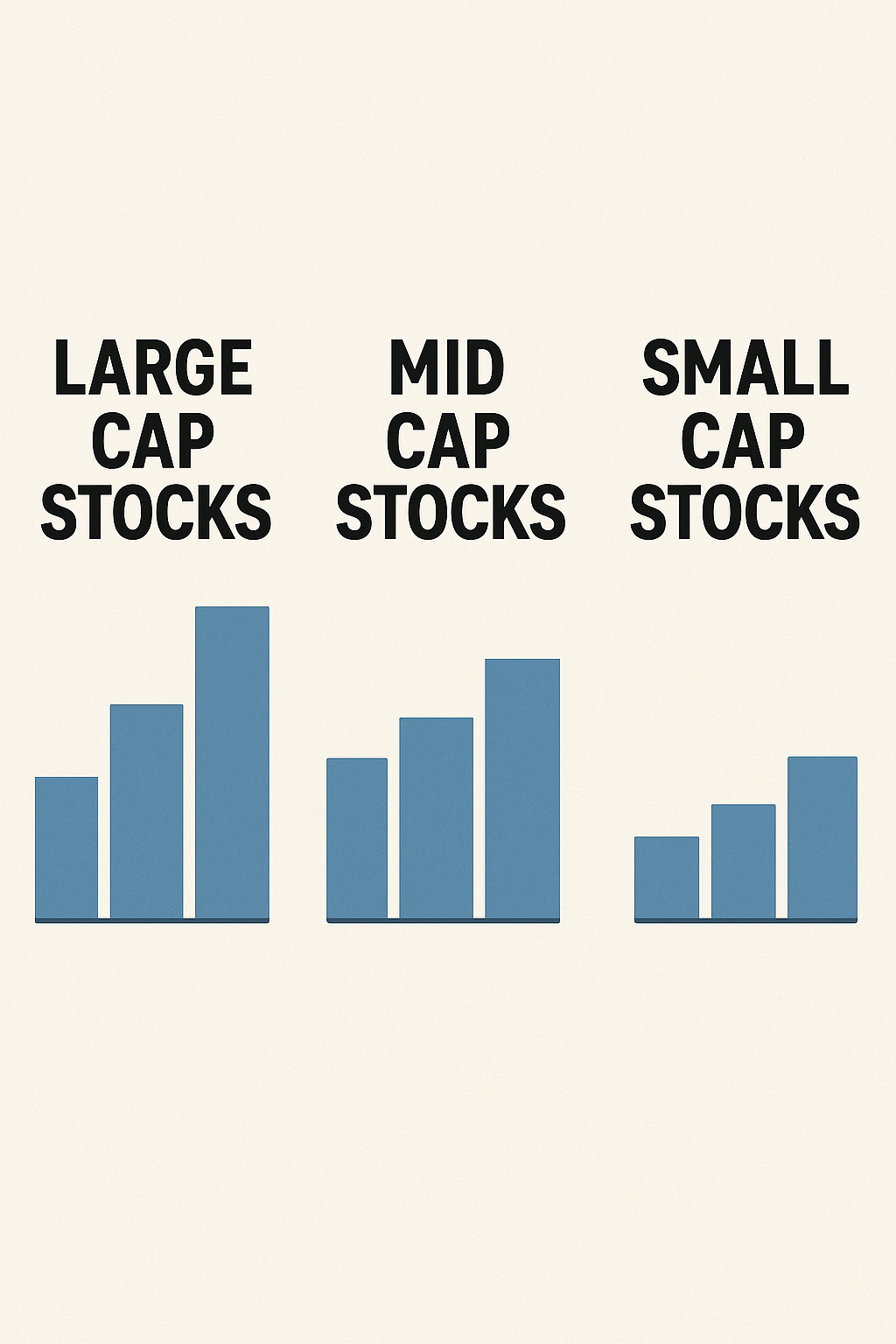



Understanding Large Cap, Mid Cap, and Small Cap Stocks: A Deep Dive by AGSSL
Investing in the stock market requires more than just a hunch or a hot tip. Whether you're a seasoned investor or a beginner, one of the foundational principles you must understand is market capitalisation, or market cap. It helps investors categorize companies based on their size, stability, and growth potential. In this comprehensive guide from AGSSL, we'll explore the key differences between large-cap, mid-cap, and small-cap stocks — and help you decide which combination best suits your investment journey.
Table of Contents
1. What is Market Capitalisation?
Market Capitalisation represents the total value of a company as determined by the stock market. It reflects what the public perceives a company to be worth. This figure provides insight into a company's size, performance expectations, and investment characteristics.
2. How Is Market Capitalisation Calculated?
The formula is straightforward:
Market Cap = Current Share Price × Total Number of Outstanding Shares
For example, if AGSSL Corp. has 100 crore shares trading at ₹200 each, the market cap is:
₹200 × 100 crore = ₹20,000 crore
This number becomes the benchmark for classification.
3. Categories of Stocks by Market Capitalisation
Based on market capitalisation, Indian listed companies are divided into three broad categories.
Large Cap Stocks
Mid Cap Stocks
Small Cap Stocks
4. In-Depth Comparison: Large vs. Mid vs. Small Cap
|
Feature |
Large Cap |
Mid Cap |
Small Cap |
|
Market Presence |
High, often global |
Growing regional/national |
Niche, often emerging |
|
Volatility |
Low |
Moderate |
High |
|
Liquidity |
High |
Moderate |
Low |
|
Risk Level |
Low |
Moderate |
High |
|
Growth Potential |
Limited but steady |
Balanced |
High |
|
Dividend Payout |
Regular |
Variable |
Rare |
|
Investor Suitability |
Conservative |
Balanced risk-takers |
Aggressive growth-seekers |
5. Investor Profiles for Each Market Cap
Large Cap Investors
Mid Cap Investors
Small Cap Investors
6. Risk vs. Reward: What Should You Expect?
Risk and reward are directly proportional to the market cap size.
7. Role of Market Cap in Portfolio Diversification
Diversification is key to successful investing. Spreading your investments across various market cap categories can help reduce overall risk.
Example Portfolio:
This mix ensures that your portfolio weathers economic changes while capturing growth.
8. Market Capitalisation and Mutual Funds
Mutual fund schemes often align their investment strategy with market cap:
Choosing the right mutual fund depends on your investment horizon, goals, and risk appetite.
9. How to Choose the Right Cap Category
Before investing, answer these:
10. Final Thoughts from AGSSL
Market capitalisation is more than just a label — it’s a core principle that helps investors plan intelligently. Whether you're building a retirement corpus, saving for your child’s education, or seeking high returns, knowing the differences between large, mid, and small cap stocks is critical.
At AGSSL, we encourage investors to:
Key Takeaways